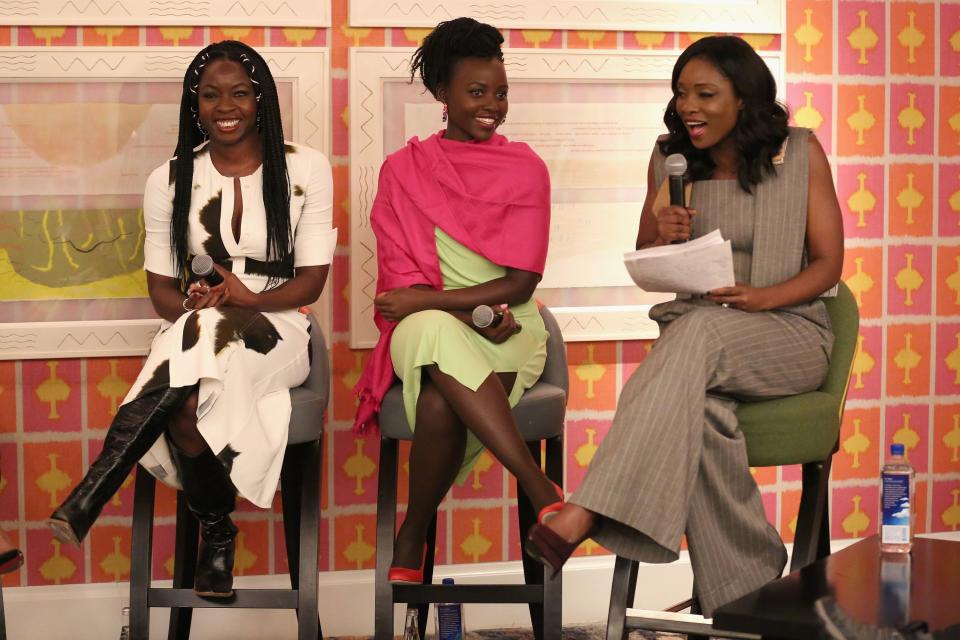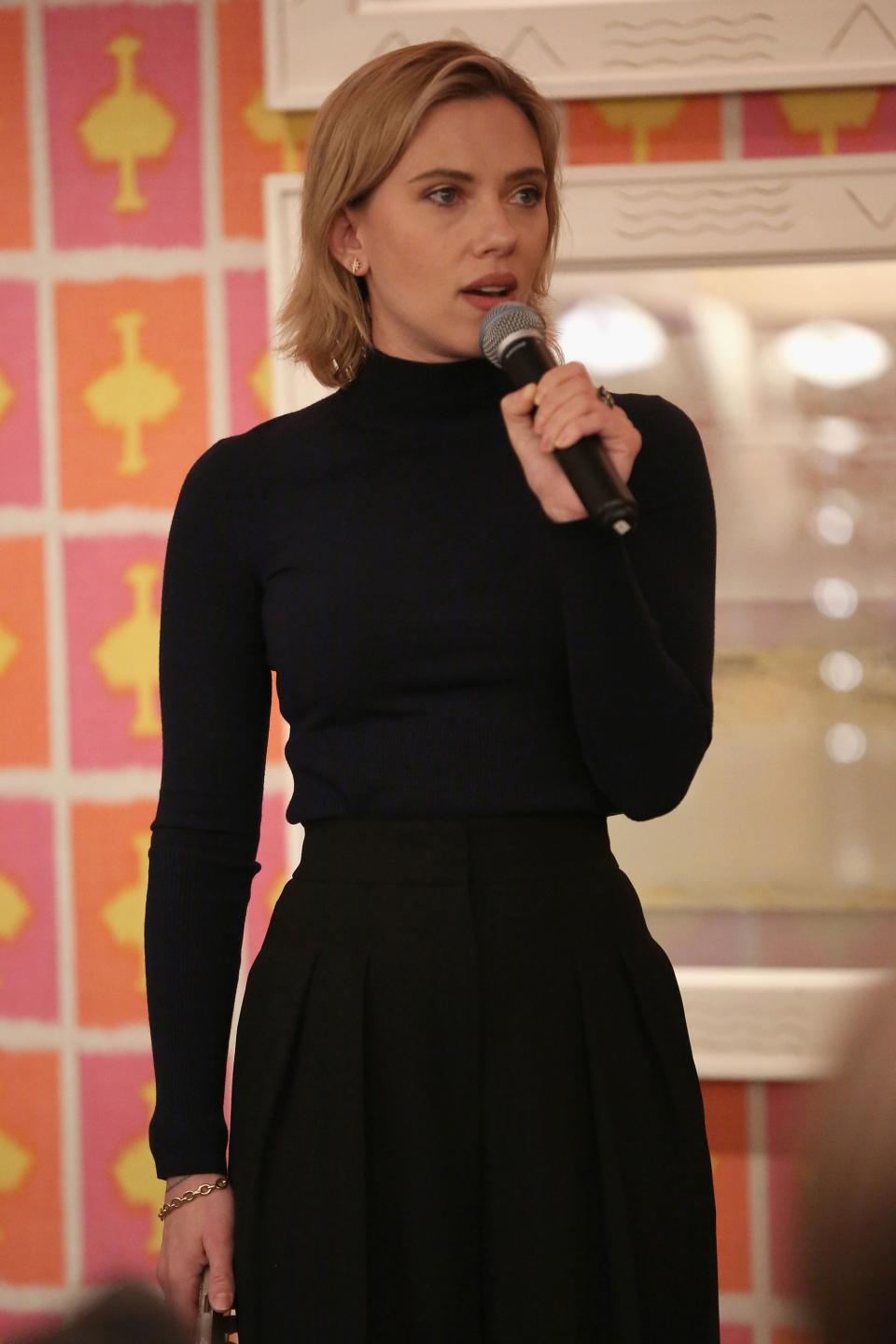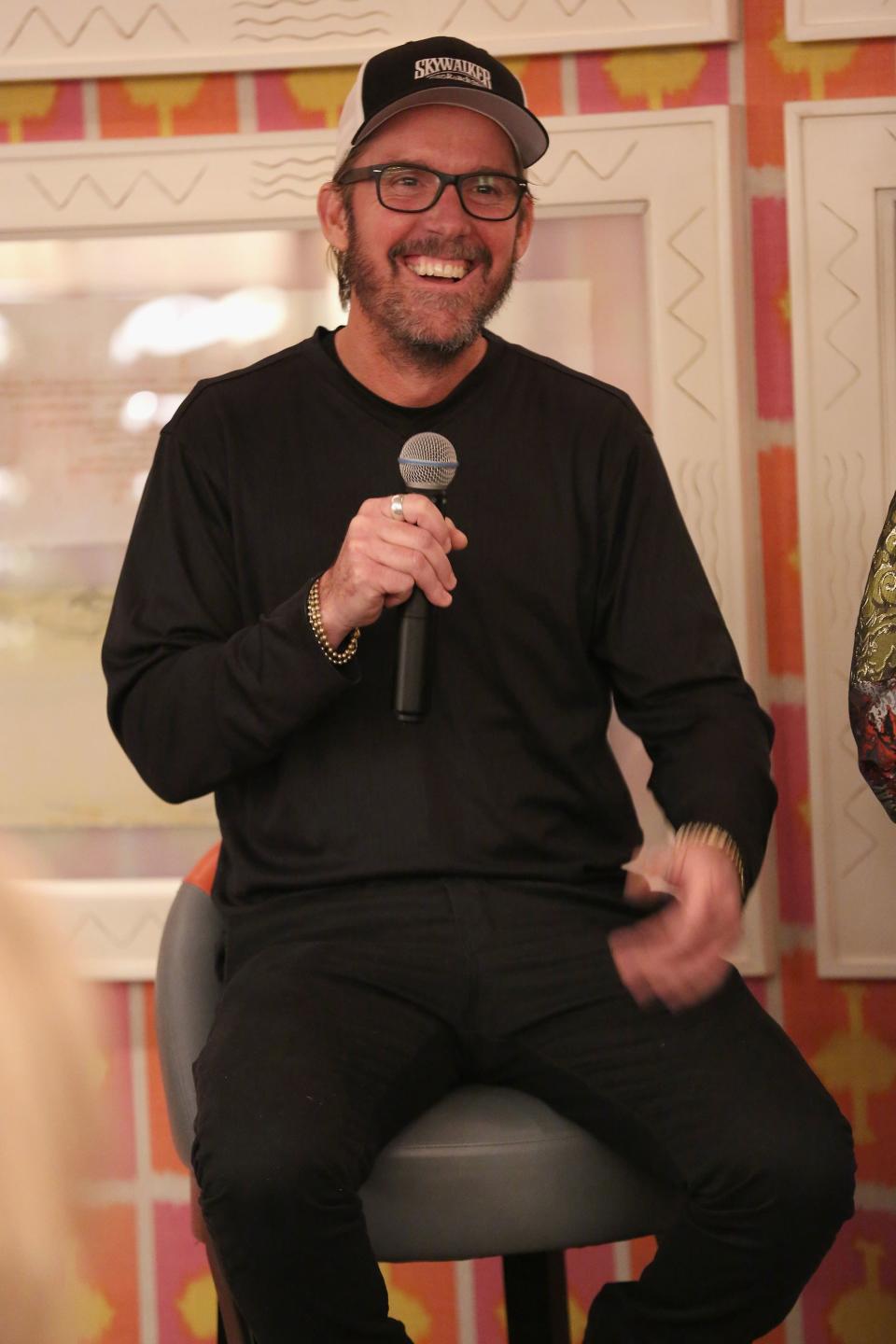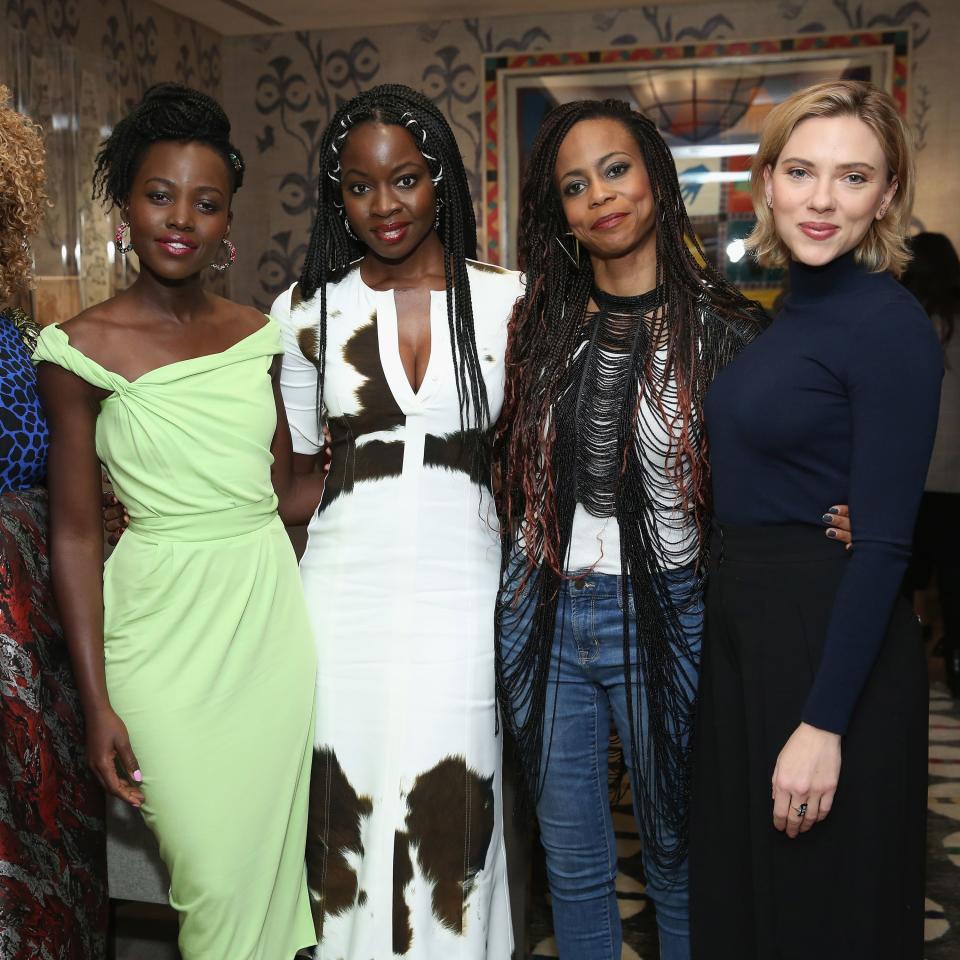Lupita Nyong’o, Danai Gurira, and Scarlett Johansson Toast Black Panther
Lupita Nyong’o, Danai Gurira, and Scarlett Johansson Toast Black Panther



2018 had no shortage of quality movies, but none created a moment quite like Black Panther. Marvel’s superhero flick succeeded on every level, impressing critics, dominating the box office, and sharing a poignant cultural message. Naturally, the Ryan Coogler–helmed project has emerged as one of the year’s awards-season contenders, and this weekend, to celebrate its many accomplishments, the forces behind the film came out for a special screening and discussion at New York’s Crosby Hotel. Stars Lupita Nyong’o and Danai Gurira were joined onstage by costume designer Ruth E. Carter, production designer Hannah Beachler, and sound editor Steve Boeddeker for a panel led by journalist Lola Ogunnaike. Hosted by fellow Marvel alum Scarlett Johansson, the event provided vital insight into the making of the film and the process of bringing the world of Wakanda to life.
As one of the top-grossing movies of all time, it’s clear that Black Panther affected audiences, but it also had a powerful impact on its cast and crew. For Nyong’o, who had been front and center in blockbusters like Star Wars and The Jungle Book, finding a project with the potential to touch viewers on a personal level is the goal. “To be a part of something that is both meaningful and incredibly entertaining is an actor’s dream,” she said. “You want to make projects that live on long after you’re gone, that people latch onto and claim for themselves.” Moved by the reaction the team garnered as they took the movie on the road, she said her experience working on Coogler’s film was unlike any she’d had previously. The difference lay in the way the story resonated with underserved communities. “It [connects with] Africans and their diaspora, but also with other people,” she said, expounding on the story’s global reach. “When we were in South Korea, all the journalists were coming in their traditional garb. This film was a reminder to people that they are from incredibly rich histories and cultures. It inspired people to revisit and reclaim those things about themselves that may have been lost in the pursuit of modernity and globalization. To see people remember who they are and where they’re from, and hold onto that to inform where they’re going, is really powerful.”
The sentiment was echoed by costar Gurira. An Obie Award–winning playwright whose work tackles issues connected to the Pan-African experience, she is used to seeing the continent of Africa depicted stereotypically in movies and television. Tired of Hollywood’s formulaic conventions, the desire to craft authentic narratives was part of what prompted her to write. “We need to stop having an ‘idea’ of Africa. It’s a real place. There are 1,500 languages, not dialects,” she said. “There are countries, communities, societies, intellectuals—everything is there. [Filmmakers should] go there, take a look, learn, and then create.” Her first look at Coogler and Joe Robert Cole’s script provided a refreshing example of what happens when authors put in the necessary work. “They pulled from the real,” said Gurira. “Then they created something [new] that made it majestic. It was thrilling to read that script.”
The words on the page were only the beginning; to ensure accuracy and stunning visuals, production designer Beachler created a 500-page bible complete with references, visual examples, and explanations for each detail that made its way onto the screen. Information about the customs, artwork, and beliefs of multiple tribes—the elements that would eventually comprise Wakanda’s Afrofuturist vision—led to revelations for Beachler, who spent months doing research and describes creating the expansive Hall of Records as a “kid in a candy store” moment. “I’m adopted, so my past begins and ends with me,” said Beachler. “I don’t know anything about my grandfather and great-grandfather, or about my ancestors, [except] that they were slaves. It’s something that has haunted me my whole life, so when Ryan said we need to know what is in every building, that’s where the bible sprang from—Ryan gave me the freedom to heal myself.” Beachler’s contributions informed Carter’s expressive costumes, which merged traditional dress and modern techniques into a seamless aesthetic that featured everything from gold armor to 3-D-printed isicholo hats, which took an international team of artists to create. “Everything had to feel real to us,” said Carter. “We knew when it felt right, and we knew when we had to take things a step further.”
The effort, energy, and attention to detail paid off, even managing to impress Marvel veterans like Johansson and Captain America himself, Chris Evans. “Chris and I were just like, ‘How do we get in this franchise!’” shared Johansson of her introduction to the series on-set with Gurira and the warriors of the Dora Milaje while filming Avengers: Infinity War. By the time the film debuted in February, Johansson—like everyone else—found herself completely caught up in the phenomenon: “I was blown away, entranced, entertained, and touched by this amazing artistic effort.” Well said.


